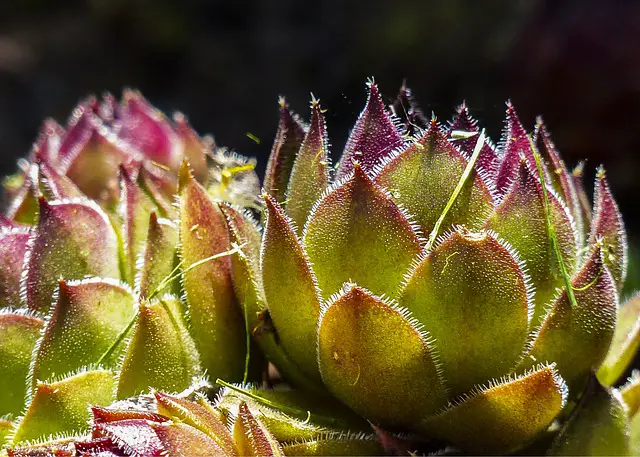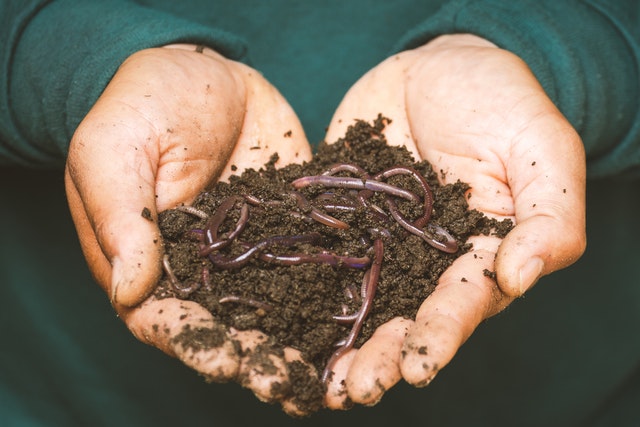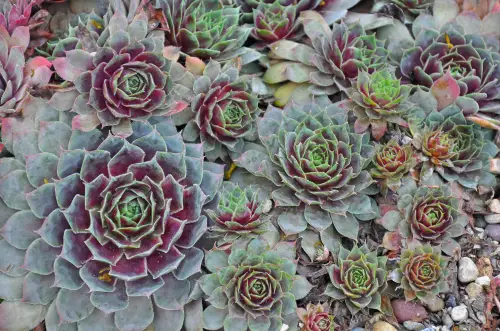The hen and chick plant is scientifically termed Sempervivum, which translates to ‘forever alive.’ Despite what this succulent’s name may suggest, you may still face a hen and chick plant dying. Your plant may be dying from too much humidity or overwatering. It is important for you to monitor your plant’s condition to ensure it does not become deficient in essential nutrients or is affected by any external factors like pests or diseases.
These succulents may also weaken due to a lack of proper nutrient-rich soil, pest infestations, and fungal diseases. Luckily, there are solutions to most of the issues mentioned. Stick around to learn more about the reason behind your hen and chick plant dying and how you can potentially revive it.
Hen and Chick Plant Dying

Hen and chick plants are mat-forming succulents. They’re named so because the hen is the largest part of the plant, whilst the surrounding smaller florets are its chicks.
Now, you’ve probably noticed your hen and chick plant’s leaves shrinking or turning a dark color. Other symptoms of a close death could be mushy leaves. You may also want to take a closer look at the plant’s hue. If it’s turning red, brown, or yellow, that’s usually a bad sign.
Other than that, the cause could be traced from parasites, in which case, you may see tiny bite marks or irregularly-shaped leaves.
While these reasons could be redeemable, it’s worth considering that hen and chick plants are monocarpic. This means that they only bloom once in their lifetime. For this reason, your hen and chick may be dying of natural causes.
This is why propagating the chicks is crucial, so you don’t end up with one whole dying plant. Apart from that, if the hen and chick plant is dying of other causes such as overwatering or underwatering, then we recommend pruning and adjusting the water intake of your plant accordingly.
All the same, hen and chick plants are hardy succulents that can withstand extreme cold and hot temperatures. In most cases, the plant may be dying due to its natural cycle.
Why is Your Hen and Chick Plant Dying?
As you go to check your hen and chick plant, you can’t help but notice a few discolorations, and a soft or maybe brittle texture. These are often symptoms of a dying hen and chick plant. Here are some of the reasons why your succulent is wasting away.
1. Its Lifespan Ended
Once your hen has bloomed, it’ll subsequently die. It’s the natural monocarpic life cycle of the plant. The blooming occurs for about a week or so before it reaches the end of its life. Before flowering, the plant enjoys a long three years of its typical lifespan.
2. Underwatering or Overwatering

Watering your succulent doesn’t mean following a strict weekly spray. For all you know, you may be watering an already damp-soiled hen and chick. Having said that, leaving your plant out in the sun for too long without sufficient watering may also cause dryness and lead to weak and yellow leaves.
3. Pest or Disease Infestation
Speaking of overwatering, this issue tends to lead to fungal infections such as root rot. This sort of infection usually shows on the succulent in the form of withered and yellow leaves.
In other cases, pests can also damage your hen and chick. Mealybugs and aphids have a taste for your succulent leaves. This is especially true if you leave the plant in a humid-rich environment where these pests thrive.
Can You Revive a Dying Hen and Chick Plant?
Reviving a dying hen and chick plant can be done, but it also depends on the condition of the succulent. In other words, you can’t exactly bring back a dying hen floret once it has bloomed.
Nonetheless, if the plant is dying from other reasons like lack of nutrition or underwatering, then there may be some hope for revival. Here are some solutions for each issue below.
1. Overwatering and Underwatering Solution
If the hen and chick plant is overwatered, then leave it be or re-pot it. You can also take out the succulent and let the soil air dry. In contrast, an underwatered succulent will need an extra watering session.
2. Lack of Nourishment Solution

To provide additional nourishment to your limping succulent, you can add a layer of fertilizer on top of its soil. Just make sure the soil is healthy.
3. Fungal Disease Solution
This problem usually occurs from waterlogged or overwatered soil. Therefore, the best solution is to change the soil to a more well-draining type such as a sandy option.
Also read: Why is My Calibrachoa Dying
To Summarize
In short, a hen and chick plant dying can be caused by factors such as a lack of proper watering, insufficient nutrient intake, or a pest infestation. The succulent may have even reached its lifespan’s end.
Luckily, most of these issues can be resolved. If the plant isn’t making as many chicks as it should, then you can add some fertilizer. Ill-watered succulents may only need an extra drink. Opposingly, overwatered hen and chick plants need to be left alone until the soil is less damp.
Since the hen and chick is a mat-forming plant, you can simply cut off one of its chicks and grow them separately, until it becomes a hen itself.
Frequently Asked Questions
How do you revive a dying chick and hen?
Reviving a dying chick and hen mainly involves cutting off dead or spent leaves or chicks. In other cases, underwatering and overwatering are usually fixed by adjusting your watering schedule.
That being said, if your chick and hen plant is overwatered, you may re-pot it or wait until the soli is drained from excess moisture. Additionally, you can expose the plant to some sunlight to evaporate some of the stored water.
Meanwhile, if it’s underwatered, then the hen and chick plant’s leaves will turn yellow and dry up. In which case, you’ll need to water them as soon as possible.
How do you revive a dying succulent?
Whether the soil’s over-hydrated or the leaves are too mushy, reviving a dying succulent is still possible.
If the succulent is soft to the touch, then it’s probably overwatered and needs indirect sunlight and time to air dry the moisture off. To make this process go faster, you can place the succulent on a mesh strainer for better aeration.
On top of that, you may also want to change the soil altogether. Overwatered soil can develop harmful diseases such as root rot, so it’s best to just toss the old soil out and re-pot the succulent.
How much water do hen and chick plants need?
Generally speaking, you should water your hen and chick plant once a week. Nevertheless, some environmental factors can change that.
For example, the type of soil can impact the amount of water a hen and chick succulent will require. Clay soil usually dries slowly, meaning you won’t need to water your plant as much. On the other hand, sandy soil loses moisture more easily.
For this purpose, the best way to water your succulent is by assessing its leaves and soil every once in a while.
If the soil is too damp, then you can skip watering it until the top one or two inches are dry. Meanwhile, if the leaves are too tender or brittle, then it may be time to lay off the water or give it a spritz, respectively.

Hey, I’m Lisa and I’ve been an avid gardener for over 30 years. I love writing, talking and living in the garden! Feel free to connect with me on my socials below

